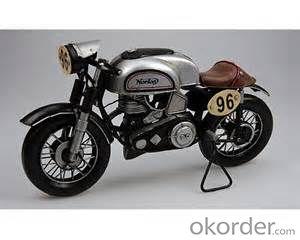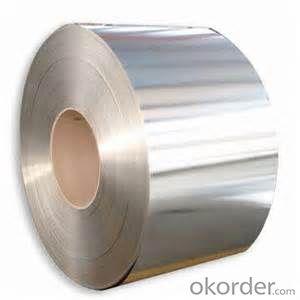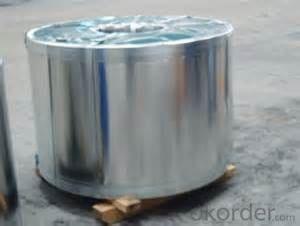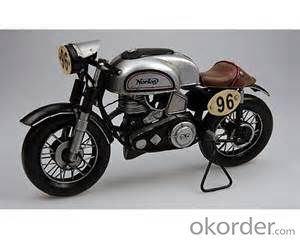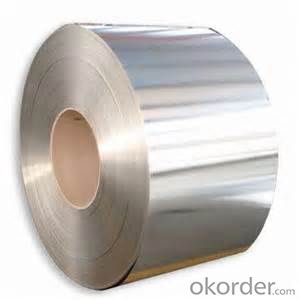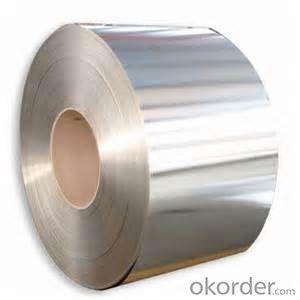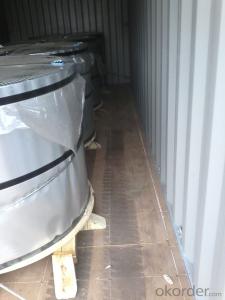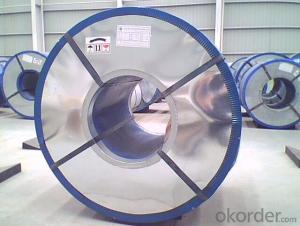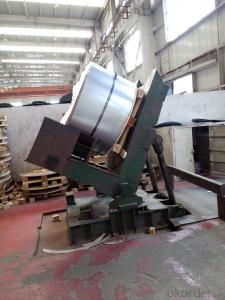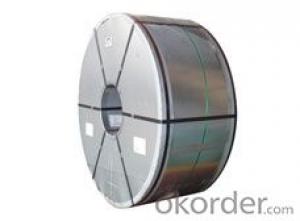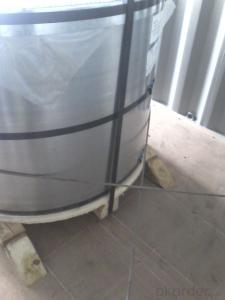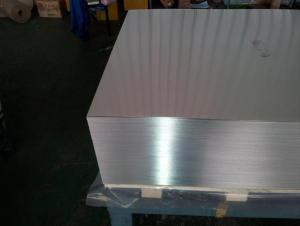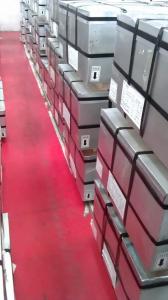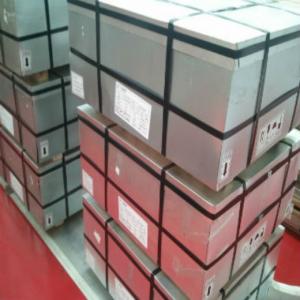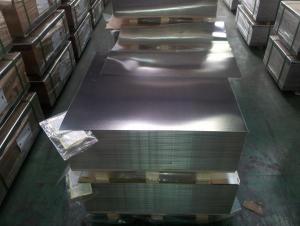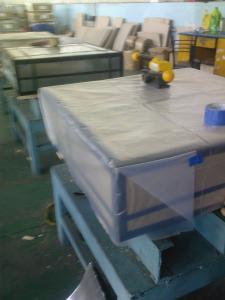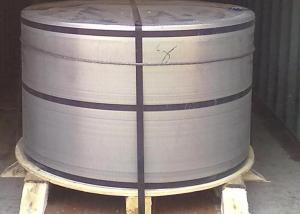Prime Good Quality ETP Tinplate For Children Toys
- Loading Port:
- China Main Port
- Payment Terms:
- TT OR LC
- Min Order Qty:
- -
- Supply Capability:
- -
OKorder Service Pledge
OKorder Financial Service
You Might Also Like
We have been producing tinplate material professionally and providing related service for decades years. Now we have been exporting our material to the world. Please kindly contact us to meet your needs for ETP materail.
Below is the specification we currently do:
1. Standard: GB/T 2520-2000, JIS G3303-2002 and DIN EN 10203-1991
2. Raw material: MR, SPCC
3.Thickness: 0.18 to 0.50mm
4. Width: 260 to 980mm
5. Coil diameter: ID 420mm or 508mm
6. Temper grade: T2, T3 and T4
7. Tin coating: ordinary 2.8 or 2.8g and 5.6g or 5.6g, can produce according to customer's requests
8. Applications: paint, chemical and other usage can make battery, electric cable and other industries
9. Package: anti-rust paper, corner protected. Sheets or coils according customer's request.
Standard for Temper:
code | Chinese Stardard | Japaness Standard | American Standard | European Standard | International Standard |
| GB/T 2520-2000 | JIS G3303-2002 | ASTM A623M-2002 | DIN EN 10203-1991 | ISO 11949-1995 |
T-2 | TH52+SE | T-2 | T-2(53) | T52 | TH52+SE |
T-2.5 | TH55+SE | T-2.5 |
|
| TH55+SE |
T-3 | TH57+SE | T-3 | T-3(T57) | T57 | TH57+SE |
T-3.5 |
|
|
|
|
|
T-4 | TH61+SE | T-4 | T-4(T61) | T61 | TH61+SE |
Surface of tinplate:
Marks | Surface state | Characteristics |
B | Bright rough | Glazed surface obtained after melting treatment of electrotinned smooth raw material strip featuring certain oriented rubstone figure. |
R | Stone rough | Glazed surface obtained after melting treatment of electrotinned raw material strip featuring certain oriented rubstone figure. |
S | Silver rough | Glazed surface obtained after melting treatment of electrotinned raw material strip with rough matt surface. |
- Q: How does tinplate packaging contribute to product protection against leakage?
- Tinplate packaging contributes to product protection against leakage primarily due to its durable and corrosion-resistant properties. The tin coating on the steel substrate prevents any contact between the product and the surrounding environment, minimizing the risk of leakage. Additionally, tinplate packaging is often manufactured using advanced sealing techniques, ensuring airtight and leak-proof closures. Overall, the robust nature of tinplate packaging serves as a reliable barrier, safeguarding the product from potential leakage and preserving its quality.
- Q: How does tinplate packaging contribute to product protection against contamination?
- Tinplate packaging provides a protective barrier between the product and the external environment, preventing contamination from various sources such as moisture, oxygen, light, and microorganisms. The tin coating on the steel substrate acts as a corrosion-resistant layer, ensuring the integrity of the packaging and safeguarding the product from potential contaminants. Additionally, tinplate packaging can be hermetically sealed, further reducing the risk of contamination by creating a tight and secure enclosure for the product.
- Q: Can tinplate be used for storage containers?
- Yes, tinplate can be used for storage containers. It is a common material choice due to its durability, corrosion resistance, and ability to keep food and other items protected. Tinplate containers are commonly used for packaging and storing various products, including food, beverages, chemicals, and more.
- Q: How is the thickness of tinplate measured?
- The thickness of tinplate is typically measured using a micrometer or thickness gauge, which accurately determines the thickness of the tin coating on the steel substrate.
- Q: What are the different ways to seal tinplate containers?
- There are several different ways to seal tinplate containers, including using a metal lid with a rubber gasket, using a plastic or paper lid with a heat-sealed lining, using a twist-off cap with a tamper-evident seal, and using a peel-off foil seal.
- Q: Tin cans and tin cans, which is good?
- Tin is tin plate, of course tin tin is tin pot. Another name is tin plate. For example, you ask tomatoes and tomatoes which taste good, as the brothers in Pohang say, the same thing is different.
- Q: Can tinplate be used for packaging of corrosive substances?
- No, tinplate is not suitable for packaging corrosive substances as it can react with the corrosive materials and lead to contamination or degradation of the product.
- Q: What are the common closure options for tinplate containers?
- The common closure options for tinplate containers include screw-on lids, snap-on lids, press-on lids, and hinged lids.
- Q: Can tinplate be used for non-food products?
- Yes, tinplate can be used for non-food products. Tinplate is a versatile material that can be used in various industries such as automotive, construction, electronics, and packaging. Its corrosion resistance and durability make it suitable for non-food applications like metal cans, aerosol containers, electrical enclosures, and decorative items.
- Q: What are the environmental impacts of using tinplate?
- The environmental impacts of using tinplate include deforestation due to the extraction of tin ore, air and water pollution from mining and smelting processes, and the release of greenhouse gases during production. Additionally, the disposal of tinplate products can contribute to landfill waste.
Send your message to us
Prime Good Quality ETP Tinplate For Children Toys
- Loading Port:
- China Main Port
- Payment Terms:
- TT OR LC
- Min Order Qty:
- -
- Supply Capability:
- -
OKorder Service Pledge
OKorder Financial Service
Similar products
Hot products
Hot Searches
Related keywords
